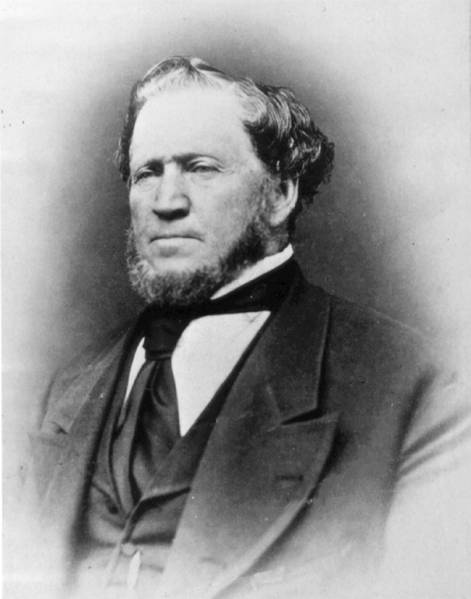Mormon Reformation of 1856 - 1857
A reformation is defined as “the action or process of reforming an institution or practice.” In 1856 and 1857, under the direction of Brigham Young, then President and Prophet of The Church of Jesus Christ of Latter-day Saints (inadvertently referred to as the “Mormon” Church by the media and others), a period of renewed emphasis on spirituality within the Church took place. The period became known as the Mormon Reformation.
A Renewal of Faith and Testimony
With the overarching objective of inspiring Latter-day Saints throughout the Utah Territory and surrounding Mormon communities to turn from their sins and re-focus on spiritual matters, in early September 1856, President Young sent his counselor, Jedediah Morgan Grant (known for his fiery speeches during the Reformation of 1856, earning the nickname, "Brigham's Sledgehammer"), and other church leaders to preach to the Saints north of Salt Lake City, Utah, in hopes of rekindling their faith and testimonies. During the time of the Reformation, public discussions were replete with the most predominant doctrines of The Church of Jesus Christ.
- The Reformation occurred in a period of optimism and anticipation, as Church leaders hoped to create the unified society viewed as a necessary precursor to the Millennium. With the Saints now secluded in their Rocky Mountain retreat, a re-emphasis of basic principles seemed especially appropriate. [1]
As a result, almost all "active" or involved LDS Church members were re-baptized as a symbol of their renewed commitment.
The Road to the Reformation
All pioneers who had assembled themselves in the Utah Territory, whether members of The Church of Jesus Christ or empathetic non-members, were welcomed as long as they were willing to do their part in helping to build up Zion. The unhallowed area begged the help of many hands to make light work in the cutting of timber, developing roads, creating farms and pastures for cattle and other livestock, building irrigation systems, and constructing homes, meetinghouses, mills, and businesses to generate revenue. As Church members who were willing to help strengthen the Mormon settlements were so highly favored “problems they might have with smoking, drinking, profaning, Sabbath breaking, and even immoral living did not normally cost them their standing in the community and the Church." [2]
By the early 1850s, communities within the Mormon settlement were beginning to prosper; however, a portion of those who lived within the communities were not living their lives in harmony with the standards and teachings of The Church of Jesus Christ.
In September 1856, Jedediah M. Grant, a counselor in the First Presidency, and a well-known conservative voice in the extended community, preached three days of fiery sermons to the people in the area now known as Kaysville, Utah. In those sermons he called for repentance and a general recommitment to moral living and religious teachings. As a result of his preaching, 500 souls presented themselves for re-baptism as a symbol of their determination to reform their lives. The clarion message soon spread from Kaysville to the surrounding communities, as other church leaders began preaching repentance, and many other members followed suit in sealing their rededication by being re-baptized. The reformation was vehemently promoted by the First Presidency of the Church, as well as several apostles, all of whom preached “fiery sermons in favor of greater orthodoxy, and rebaptism in preparation for the full practice of "celestial law" in Utah Territory prior to the Second Coming, which they thought would be soon.” [3]
The Reformation in Salt Lake City, Utah, and Beyond
- A policy was established to have two home missionaries assigned to each ward. Equipped with a twenty-seven-question catechism to help measure the worthiness of the Saints, the home missionaries assisted families with everything from hygiene and church attendance to obeying the Ten Commandments. Only after some months of missionary-member visits were Saints in the Salt Lake City wards re-baptized in early spring of 1857. In Salt Lake City, rebaptism generally marked the formal end of the Reformation, though reform fervor continued until mid-1858. [4]
Under the direction of President Brigham Young, the reformation moved forward to settlements and missions throughout the world. Although procedures differed for areas outside of Utah, all Saints were exhorted to be re-baptized which exemplified forgiveness of sin, and a recommitment to being obedient to commandments. Those who otherwise refused to be re-baptized faced the possibility of losing their membership in the Church. Such was the case in Britain where strong adherence to the principles of the Reformation resulted in a significant number of less-committed members being removed from Church rolls.
- For many Latter-day Saints, the Reformation was a period of spiritual rejuvenation. Attending meetings, paying tithing and other free-will offerings, and showing other outward indicators of renewal increased dramatically. The Reformation also had the effect of separating "wheat from chaff." Some members were disconcerted by the processes and the effects of reform and chose to leave LDS settlements. [5]
